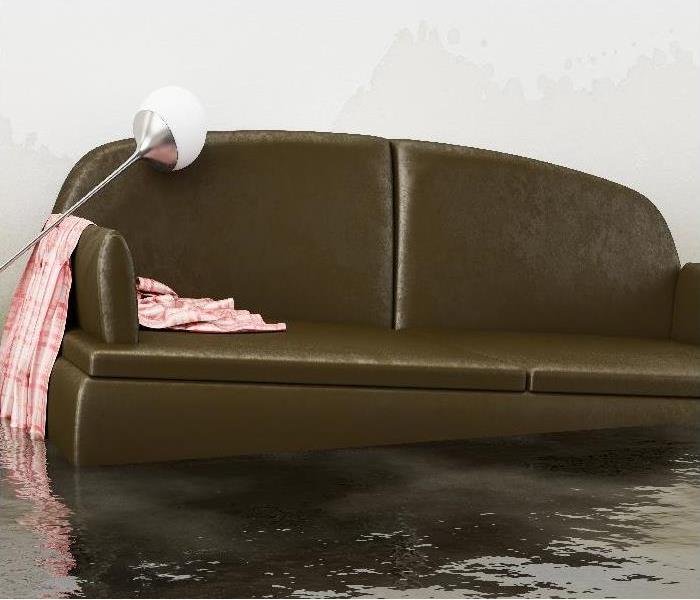How Can I Ensure That My Hicksville Home is Safe to Live in Following a Flood?
6/28/2020 (Permalink)
Floodwaters Carry Harmful Microbes, So Only a Professional Flood Damage Remediator Can Make Your Hicksville Home Safe to Live in After Flooding
Flooding is a fairly common occurrence on Long Island, and Hicksville is no exception to this. Yearly storms, ranging from strong coastal thunderstorms to Nor’easters and hurricanes, bring with them flooding torrential rains. As heavy rains overwhelm the area’s water drainage system, floodwaters pour onto local streets and into homes. These dirty waters commonly contain trash, human and animal waste, toxic chemicals, and other harmful substances. Lurking within all these are dangerous microbes that could cause health effects and degrade the structural integrity of your home. The only real way to eliminate these microscopic threats following a flood is to enlist the aid of a quality flood damage cleaning and restoration company.
How Do Flood-borne Microbes Make My Home Unsafe?
SERVPRO, a local Hicksville flood damage restoration service, often deals with the adverse effects of the following flood-borne microbes:
• Bacteria
• Viruses
• Fungi
• Other parasites
All of these microorganisms cause a wide variety of issues. If they are breathed in, swallowed, or absorbed through the skin, they may promote health effects in humans and pets. Also, they could eventually undermine the structural integrity of your home, making it dangerous to live in. Dry rot, caused by certain fungi, might decay wooden flooring, walls, and ceilings over time. It may also wear away various support beams that keep your house from collapsing. Excess moisture in the air resulting from flooding could also affect attic rafters and your roof.
What Does SERVPRO Do to Help Eliminate These Microscopic Threats?
SERVPRO technicians are trained and experienced in effectively dealing with microbial threats. In their efforts to eradicate harmful microbes, they employ a wide range of high-tech gear and innovative methods. Some tools our experts use are:
• Heated water extractors that remove microbe-supporting standing waters and kill certain microorganisms
• Desiccant dehumidifiers to remove the moisture that microbes like mold need to thrive
• Low-grain refrigerant (LGR) dehumidifiers that: supercool interior air to remove moisture via condensation to levels well below forty grains/pound, and can kill microbes adverse to low temperatures
• Injectidry systems to dry subflooring, as well as areas behind walls and ceilings
• High-tech foggers to inject disinfectants and antifungals into materials and difficult-to-access areas
• A wide variety of EPA-approved disinfecting and fungus-eliminating chemical agents
SERVPRO professionals, armed with this state-of-the-art equipment, can sanitize your home, making it safe to live in and less likely to suffer future structural damage.
When remediating flood damage, our experienced workers use a variety of methods to neutralize microbial threats. They understand that microscopic pests require three things, namely a food source, the right temperature, and enough moisture to survive and proliferate. Therefore, when combating these microorganisms, SERVPRO technicians act to alter these three life-sustaining factors. In doing this, they:
• Immediately remove dirty floodwaters and non-restorable water-damaged items that could become microbial food sources
• Inject disinfectants and antifungals into affected restorable surfaces with ultra-low volume foggers to kill bacteria and fungi feeding on them
• Use thermal foggers, which emit counteracting vaporized solutions, to neutralize airborne microbes
• Employ heated extractors, refrigerant dehumidifiers, and high-velocity box fans to alter interior temperatures so that they are less favorable for bacteria, viruses, and fungi
• Reduce the humidity of interior air to below 60% with desiccant and refrigerant dehumidifiers to hinder the growth of certain microorganisms.
• Further, dry all areas with air movers and Injectidry systems
Ultimately, all of these measures strike at the root causes of harmful microbial growth. By eliminating the food and moisture sources they depend on, as well as altering interior temperatures, SERVPRO is often successful in eradicating microscopic threats.
Everyday life in a peaceful suburb like Hicksville can be quite uneventful. However, that peace is broken a few times a year by troublesome storms. High winds and heavy rains can quickly cause expensive damage to your home. They can make tree limbs fall on your roof, causing roof leaks, flying debris to break windows, and floodwaters to rapidly inundate your property. Many times, these disasters cannot be predicted or prevented. Even the best preparations can be overcome by a powerful coastal storm. The best thing you can do before you have an issue is to know what local services are able to do if your home is affected by storm damage.
Also, it is important to take the proper precautions before the arrival of major storms. Repair roof leaks, routinely clean your gutters, fix foundation issues, board up windows, and strategically sandbag your property if necessary. All of these actions should help protect your home from the effects of many anticipated storms. However, when disaster does strike and flooding impacts your home, rest assured that nearby help is available.
If you ever need help cleaning and remediating your flood-damaged home, contact SERVPRO of Hicksville / Plainview at (516) 733-1800.






 24/7 Emergency Service
24/7 Emergency Service